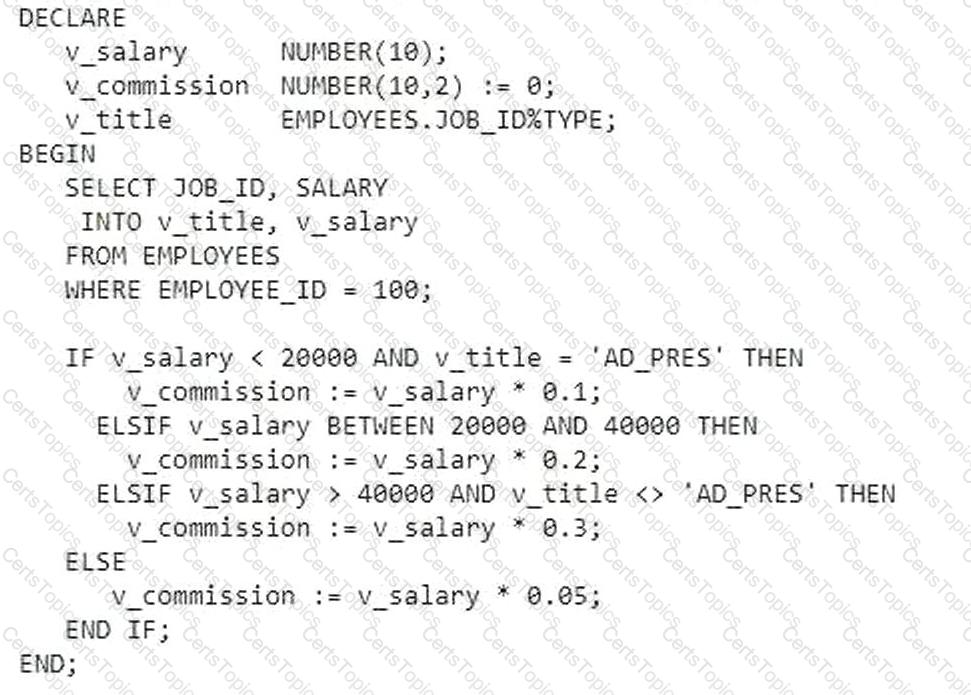Examine this row of data from the EMPLOYEES table:

Now, examine this block of code which executes successfully:

What is the value of v_commission?
Which three are valid PL/SQL variable names? (Choose three.)
Which three statements are true about passing parameters to subprograms? (Choose three.)
Which statement is true about user-defined records?
Which two are true about using the ACCESSIBLE BY clause? (Choose two.)
Which three are true about functions and procedures? (Choose three.)
Which is the correct method to implement a local subprogram in an anonymous block?
Which two are true about collections and RECORD types? (Choose two.)